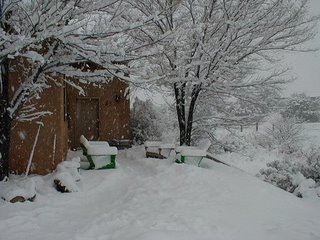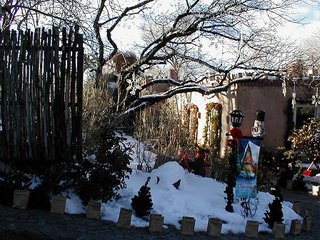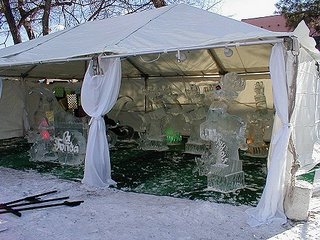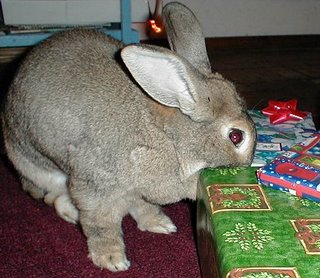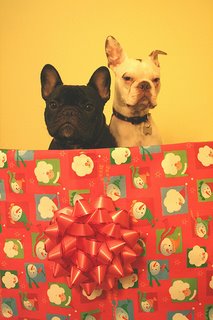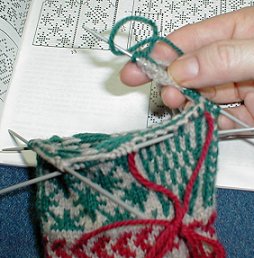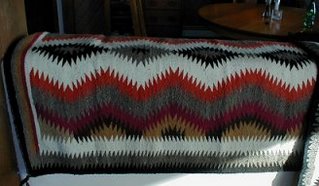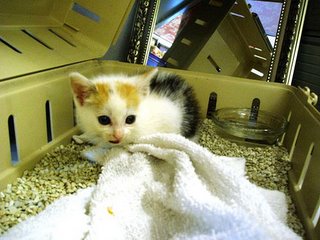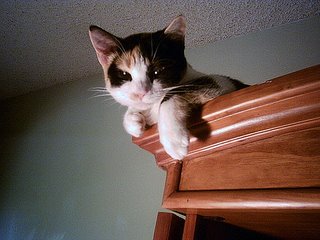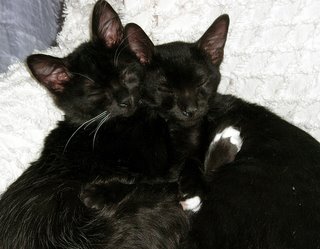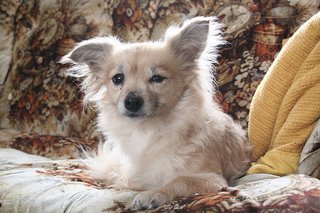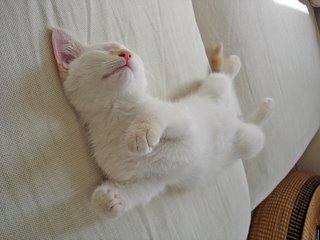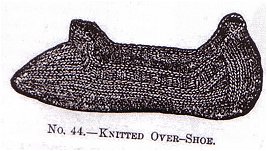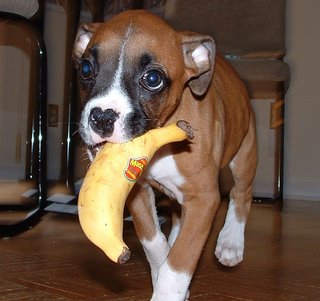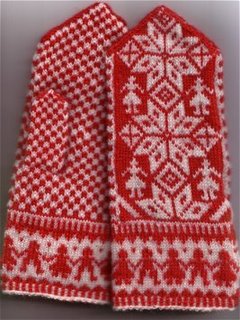
There are four main types of thumbs used for knitted gloves and mittens. Each day this week I'm going to discuss one type of thumb. I don't believe there is one type of thumb that is best for every hand. I think the thumb that works best for you mainly depends on the angle from your wrist bone to your bottom thumb knuckle.
Today's thumb is the easiest thumb to knit. I call it the peasant thumb but it is also called the invisible thumb, set-in thumb, simple thumb and stocking thumb.
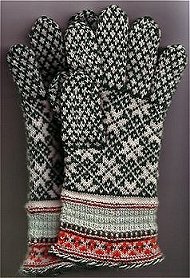
To do the peasant thumb you simply knit to the desired location, knit the thumb stitches on waste yarn, then transfer the stitches back to the left hand needle and knit over the waste yarn stitches. (You can also use the method I show
HERE for the peasant thumb to make it easier to try on the glove or mitten for the best fit while you're knitting.)
To remove the waste yarn I first take a dpn and put the top stitches (row above the waste yarn) on the dpn by carefully picking up the right hand side of each stitch. Then I do the same thing with the bottom stitches and then I remove the waste yarn by cutting or pulling it through all the stitches.
Another method to achieve the same end result is called the set-in thumb by Sheila McGregor in
Traditional Scandinavian Knitting. In this method, used for traditional Norbotten mittens, you don't put in the thumb at all. When you have finished knitting the tube you have the recipient try it on. Mark where the base of the thumb is (bottom thumb knuckle), carefully snip a thread in the center, take each side of the thread and rip out enough stitches until the thumb is wide enough, put the live stitches back on needles and begin knitting the thumb.
I have long, narrow hands and I like the fit of the peasant thumb very much. DH has wide hands with a wide angle from his wrist to the bottom thumb knuckle and he intensely dislikes the fit of peasant thumbs.
I’ve read that a peasant thumb affects the glove's durability because of the more limited ability to move the thumb. The peasant thumb is used often in traditional Latvian and Estonian designs and one advantage is that any color knitting pattern can be seamlessly extended up the thumb.
The knitted items shown above are Selbu mittens I made with graphs from
Traditional Scandinavian Knitting and Liidia's gloves from
Folk Knitting in Estonia.






